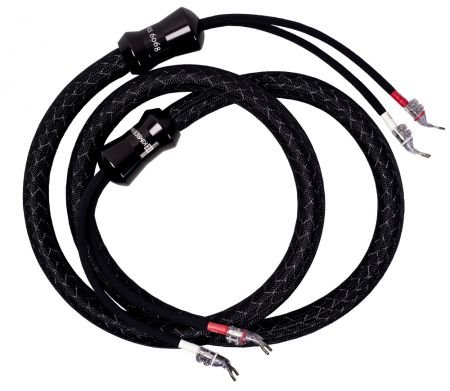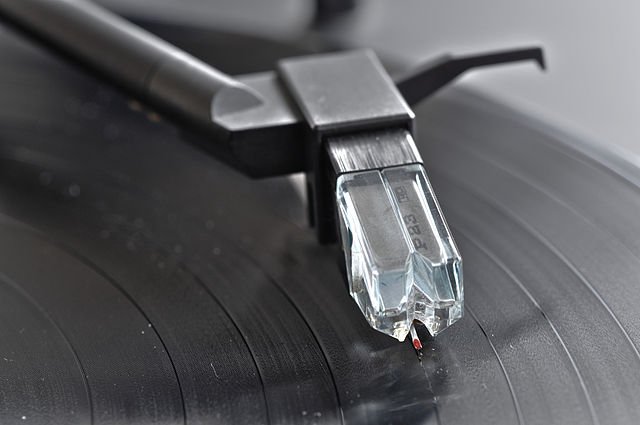
Analog heart, digital soul
Golden cables, warm tones and lossless compression. For audiologists who are audiophiles, replicating some of the beloved inadequacies of analog technology can make sound media more appealing.
What is good sound?
From a musical perspective, this question is relatively easy to answer: if we find a certain tone appealing, it sounds ‘good’. The best example of this is the distortion of an electric guitar. This sound, still popular to this day, was originally produced by turning up a guitar amp until the sound distorted, known as overdrive.
For Hi-Fi (High Fidelity), ‘good sound’ simply means sound that is as faithfully reproduced as possible. Judging by this standard, there should be no discoloration of the sound along the entire reproduction chain, in order to ensure a ‘clean’ sound can be maintained.

Cables play an extremely important role here as they need to pass the audio signal from the amplifier to the speaker with as little loss as possible. For what feels like an eternity, myriad myths have been circulating relating to this cable connection, among them the myth of the ‘golden cable’. All sorts of magical sound transfer properties have been attributed to this expensive, golden cable. In actual fact, gold plating on the contact tip has no positive effect on the sound quality whatsoever. Gold is more resistant to corrosion in the air, which would justify a higher price in the long term, but twisted teflon-coated silver wire is the perfect choice for signal transfer. Price per pair for 1 meter cable ≙EUR 14,995.001
The warm tone produced by the combination of tube amp and vinyl record is the stuff of legends, and these technologies really seem to be experiencing an ongoing and emotional comeback, when it comes to how analogue sound is perceived. There seems to be no limit to how audio enthusiasts interpret this sound, with descriptions as diverse as they are creative: warm, full, smooth, vivid, feminine, etc.
When a tube amplifier approaches its maximum, the gain ratio is gradually reduced. This produces a slight curve, which is referred to as ‘soft clipping’. This, in turn, creates light distortion that many find pleasant. Phonak has already successfully introduced a very similar function in its Power devices a few years back (BroadBand Booster).
Records also generate light distortion in the bass range, and music pressed to vinyl can only render the treble to a limited extent. What this means is that ‘black gold’ can generally only handle frequencies up to a maximum of 12 kHz, although this only applies for the outermost grooves at the start. Analog sound is therefore duller and more distorted.
The turntable experience
I believe the popularity of analogue sound media is down to the fact that they create more awareness for the music as such. Let’s be honest, taking a record from a well-organized record shelf, placing it carefully on the turntable, skillfully setting down the needle on the start groove with one hand, and studying the cover as you hear the first crackles emerge from your speakers is an experience that you simply don’t get with an MP3.


However, the advantages of digital technology are not to be dismissed out of hand; after all, it’s this technology that provides us with a clean and interference-free signal with almost no loss (Nyquist-Shannon sampling theorem). What’s more, digital tech enables everything to be stored and reproduced loss-free.
Combining the best of both worlds
For many audiophiles, however, this doesn’t change the fact that ‘CD quality’ sounds sterile and cold. Although some of them may be won over by the countless exciting programs and features for music producers that enable them to mimic the warm sound of analog equipment using software. These programs work by replicating some of the beloved inadequacies of analogue technology and adding them to the digital signal, with the aim of evoking similar emotions in the listener.
So, it really is a case of “love at first (second and third) sound”!
We invite all audiophiles to read Adam’s previous blog post titled, “Are the Beatles getting louder?”
*Sources for images
Cable – https://www.ccr-highend.de/images/product_images/info_images/kimber_kable_select_ks6068.jpg
Tube amplifier – Settembrini – Own work, CC BY-SA 3.0, https://commons.wikimedia.org/w/index.php?curid=3267275
Record with cartridge – Hubert Berberich (HubiB) – Own work, CC BY 3.0, https://commons.wikimedia.org/w/index.php?curid=15175126
